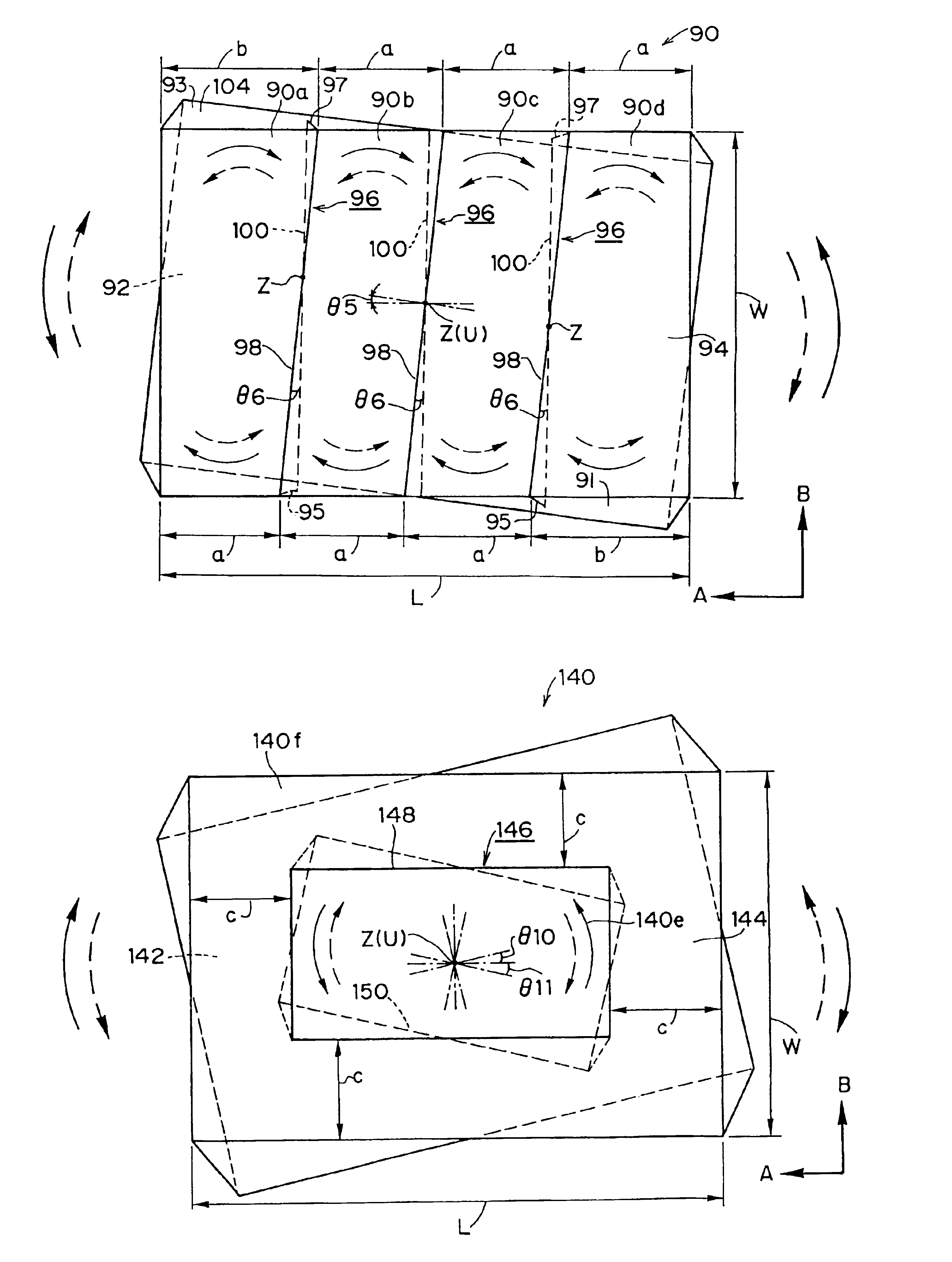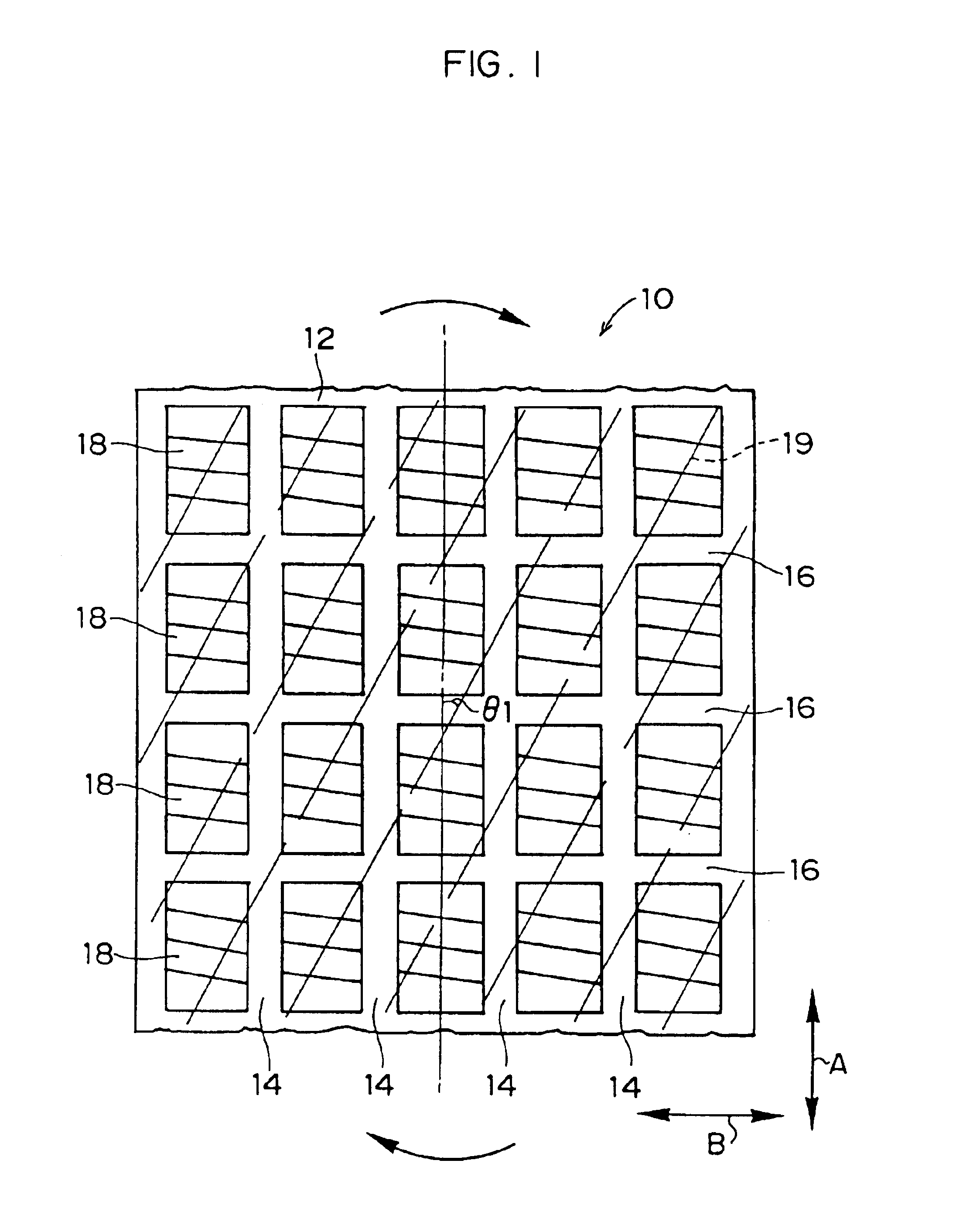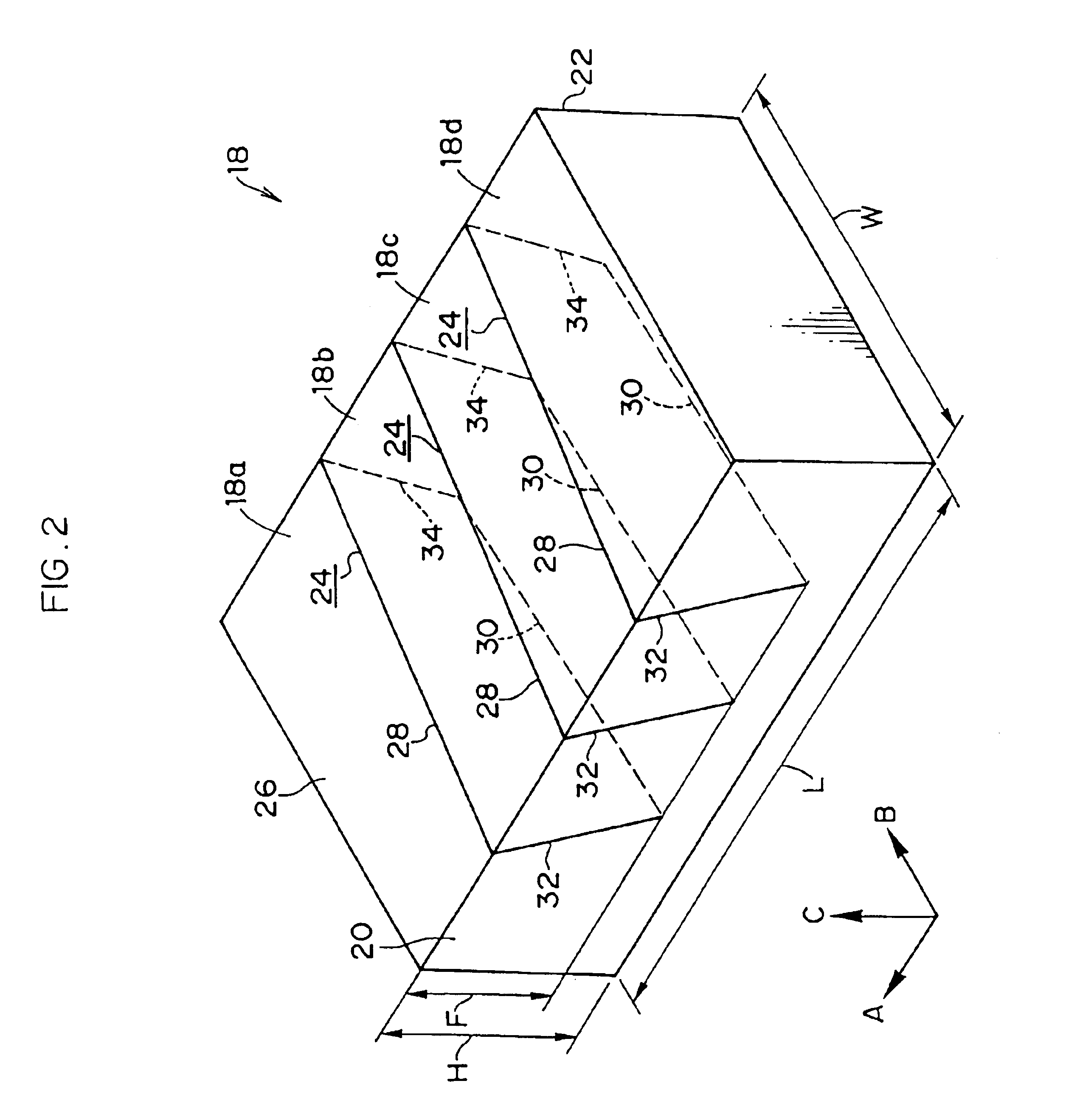Pneumatic tire including twisted sipe
a technology of pneumatic tires and sipes, applied in the field of pneumatic tires, can solve the problems of small blocks not being able to contact adjacent small blocks with sufficient force, and affecting the performance of pneumatic tires
- Summary
- Abstract
- Description
- Claims
- Application Information
AI Technical Summary
Benefits of technology
Problems solved by technology
Method used
Image
Examples
first embodiment
A pneumatic tire relating to a first embodiment of the present invention will be described in accordance with FIG. 1 through FIG. 4.
As illustrated in FIG. 1, in a tread 12 of a pneumatic tire 10 of the present embodiment, a plurality of blocks 18 are formed. The blocks 18 are demarcated by main grooves 14, which extend along the tire circumferential direction (the direction indicated by arrow A, and referred to as the A direction hereinafter), and by lug grooves 16, which extend along the tire transverse direction (the direction indicated by arrow B, and referred to as the B direction hereinafter).
Reinforcing layers in which steel cords 19 are inclined at a predetermined angle with respect to an A direction are laminated under the tread 12 in order to ensure stiffness of the pneumatic tire 10. In the outermost reinforcing layer closest to the tread 12 surface, the steel cords 19 are disposed parallel to each other and inclined at a predetermined angle .theta.1 with respect to the A ...
second embodiment
Next, a pneumatic tire relating to a second embodiment of the present invention will be described in accordance with FIGS. 5 and 6. Since the only difference between the pneumatic tire of the first embodiment and that of the present embodiment is the shape of sipes, only a sipe and a blade which is used to form the sipe will be described. The same reference numerals are used to designate elements which are the same as those in the first embodiment, and detailed description thereof will be omitted.
First, the shape of a blade which forms a sipe will be described in accordance with FIG. 6. A blade 40 is formed with such a shape that protruding portions 42, which are triangular with a height of 0.5 K in a D directional section, are formed in a zigzag, i.e., protruding alternately on the both sides of a virtual central plane V with intervals J. Each protruding portion 42 extends in the E direction which is perpendicular to the D direction. The blade 40 formed in such a manner is placed s...
third embodiment
Next, a pneumatic tire relating to a third embodiment of the present invention will be described in accordance with FIG. 7 and FIG. 8. Since the only difference between the pneumatic tires of the first and second embodiments and that of the present embodiment is the shape of sipes, only a sipe and a blade which is used to form the sipe will be described. The same reference numerals are used to designate elements which are the same as those in the first and second embodiments, and detailed description thereof will be omitted.
First, the shape of a blade which forms a sipe will be described in accordance with FIG. 8. A blade 50 is formed with such a shape that protruding portions 52, which are triangular with a height of 0.5 L in an E directional section, are formed in a zigzag, i.e., protruding alternately on the both sides of a virtual central plane V with intervals M. Each protruding portion 52 extends in the D direction which is perpendicular to the E direction. The blade 50 with s...
PUM
 Login to View More
Login to View More Abstract
Description
Claims
Application Information
 Login to View More
Login to View More - R&D
- Intellectual Property
- Life Sciences
- Materials
- Tech Scout
- Unparalleled Data Quality
- Higher Quality Content
- 60% Fewer Hallucinations
Browse by: Latest US Patents, China's latest patents, Technical Efficacy Thesaurus, Application Domain, Technology Topic, Popular Technical Reports.
© 2025 PatSnap. All rights reserved.Legal|Privacy policy|Modern Slavery Act Transparency Statement|Sitemap|About US| Contact US: help@patsnap.com



